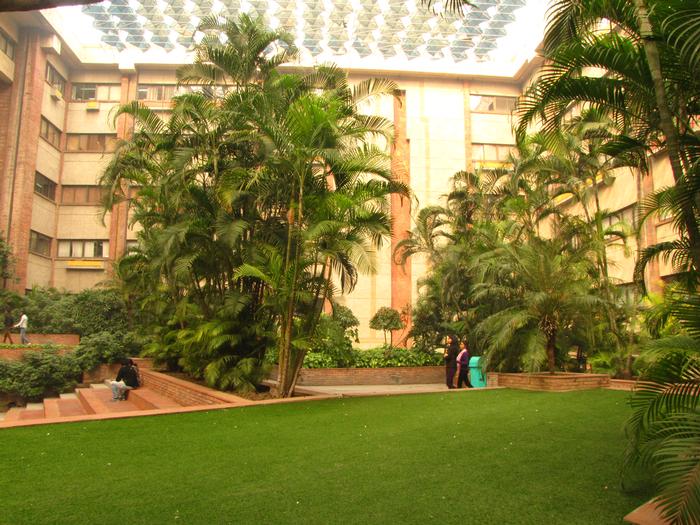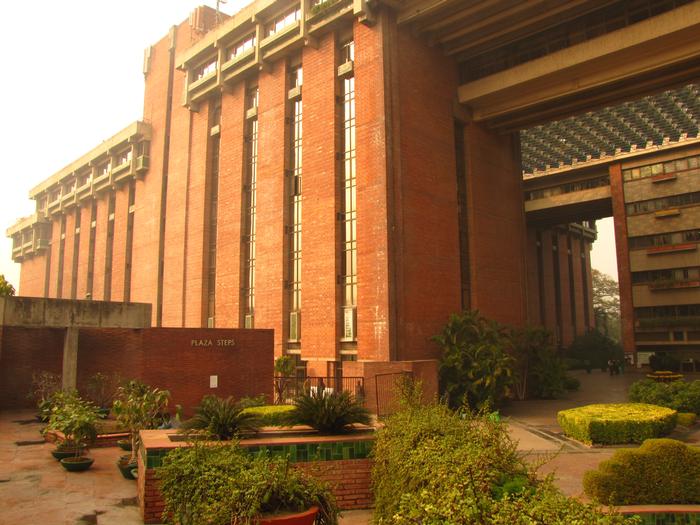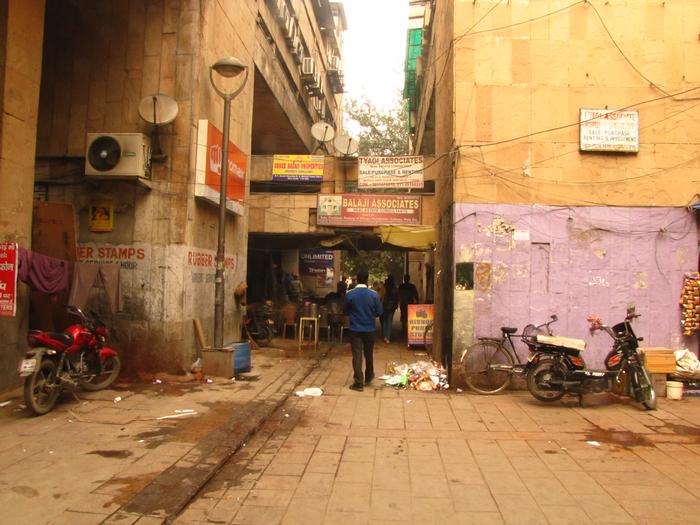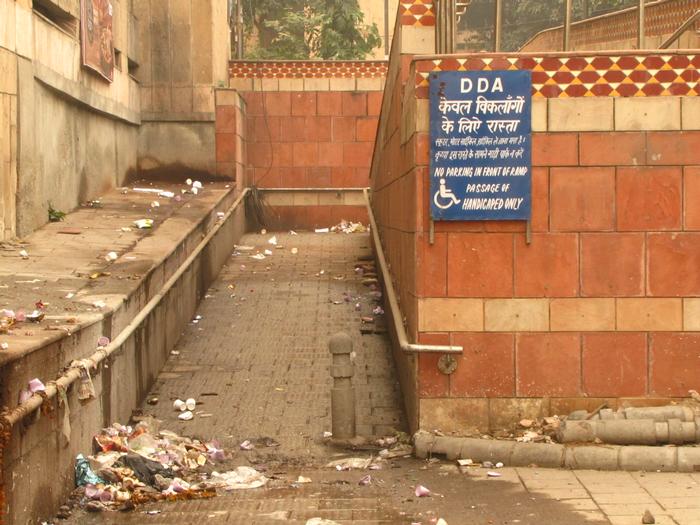[ID:882] Spaces & Spirit - The Built Form and the Human PsycheIndia “The building is a machine able to produce some human reactions predetermined.” – Peter Zumthor
Architecture since time immemorial has strived to strike a balance between the built space and the surrounding environment. The first forms of built space weren’t man made at all. Rather, homo sapiens took shelter in naturally occurring caves where they could eat, sleep, sharpen their tools or even paint! But, the sole purpose of taking shelter in caves was to feel safe and at ease with their surroundings. These were the first signs of attachment between humans and space.
The ‘safe haven’, over the years, has morphed into much more than that. Built spaces of yesteryears sought to achieve a solution to acclimatise the user to his or her surroundings and stand today as reminders of our indecisive nature of designing a space that ushers in a sense of well-being.
As we travel through the passage of time, the built form continues to grow and becomes more and more complex as does its context and purpose.
The search for nirvana on Earth is rather difficult, but it is our constant endeavour to explore and break new ground. We seek environments that can help increase productivity, improve health, inspire and trigger emotions that help link the body, mind and soul. The senses play a crucial role in determining whether a space can grow on us. The climate, light, sound and texture of and within the built space may strengthen our ability to understand and manage our work and lifestyles in a better way. Such is the impact of some spaces that they leave an indelible imprint on our minds and beckon us to return.
Our hunt for healthful environments and spaces led us all over the capital city of India, New Delhi. After much deliberation, we decided to choose the India Habitat Centre also known as the IHC by Joseph Allen Stein and Bhikaji Cama Place by Raj Rewal. Bhikaji Cama Place and the Habitat Centre might seem similar in the commercial purposes they serve, but are poles apart when it comes to the deep rooted culture of the space and a system of movement that is religiously adhered to by its users.
The evolution of technology has spurred our greed to create shiny new buildings that do more harm than good. However, Joseph Allen Stein rose to the occasion and perfected the art of using locally available materials and hence was able to reduce the overall carbon footprint of the India Habitat Centre. The use of fly ash bricks against a green landscape offers the user a serene habitat which the architect has so altruistically showcased through his design of interconnected building blocks.
The way a building feels when touched, adds to the experience as well. The tactility of the materials used, gives the user an unconscious satisfaction of being able to predict what lies behind the rough texture of a red brick or the cold stare of a glass façade.
One of us was fortunate enough to intern at one of the firms at the IHC, over the summer, and the experience helped us understand the importance of the intermingling of indoor and outdoor spaces at the workplace. Apart from being an office space, the IHC boasts of numerous cultural spaces as well as an array of fine dining restaurants, theatres, and also houses the National Institute of Design, New Delhi which all culminate to form a holistic microcosm.
Although the Centre can be accessed by three arterial roads, the noise does not permeate through to the open courtyards, which in effect act as a calm and peaceful biome, full of life and vibrancy. Solace can be found in the chirping of the birds or the patter of the rain as it trickles down the tiled cavities in the walls that act as miniature water falls. The enormity of the form can only be felt while standing at the very heart of the complex. As light filters in and hits the red brick walls, a profound image enthrals the user and creates a link that lasts a lifetime; a memory.
There’s a sense of hierarchy behind the walls of Cama Place. The IHC, on the contrary, does away with such claims by modestly linking units, with office spaces that act as bridges, suspended almost 20 metres above the ground. Stein’s design successfully piques the curiosity of the user and entices him or her to explore each space with the same level of exuberance and tenacity. We got so engrossed in discovering new spaces, that we ventured a bit too far and got told off by a bunch of security personnel!
Spaces are remembered by their rhythmic movement patterns, experiences and how they accentuate our senses, and not by their names.
The IHC borrows from the centuries old Indian tradition of the open courtyard. Can this be carried forward? Yes, indeed. By carefully tapping into the pool of architectural resources that Indian architecture offers, simple yet elegant solutions can be found to make a place speak for itself. For example, the ‘jaali’ system or façade used in most Mughal era structures not only made interior spaces more comfortable, by funnelling cool air into the space, but also doubled up as a symbol of privacy.
At night, the energy and excitement is almost palpable at the Centre, where the ambient lighting adds to the already mystical appearance of the open spaces. On the other hand, Bhikaji Cama Place transforms from an overcrowded hub to a desolate beige monolith.
In 1983, Delhi was a different city altogether and Bhikaji Cama Place was built with a sole purpose in mind, to provide a commercial district the right kind of infrastructure and vision. Nevertheless, the commercial hub of yesteryears has failed to sustain itself and has grown into a confusing pollution filled labyrinth of offices stacked one on top of the other.
Even though Cama Place was refurbished by the Delhi Development Authority (DDA) in 2005, it has become an eyesore and a symbol of disapprobation as it lacks proper management. The stark complex refuses to act as a single entity and instead gravitates towards an amalgamation of disjointed parts.
Spaces that have narrow corridors tend to be congested and while they do regulate movement, they fail to generate a rhythmic pattern that is organic and grows into its own. An overcrowded expanse may also prove detrimental to the user and threatens to rob the intimacy of a quiet vacuum from the overall experience. That is what Cama Place has succumbed to.
Numerous problems emerge when it comes to Cama Place’s location and surroundings. The architect can in no way be blamed for the utter lack of communication between government bodies and future developments like flyovers and metro lines or the laying of water pipelines that the municipal corporations conveniently forgot about before constructing the roads.
Rapid urbanization has led to an increase in the number of cars that ply on Delhi roads. Parking, congestion, noise and air pollution still remain major concerns which the Place is yet to address. The absence of green buffer spaces between the parking zone and the internal spaces of the building can generate stress related illnesses and downplay whatever efforts that have been made to improve the condition of the site.
The flyover built belatedly seems to be a superimposed structure that further tarnishes the image of the once revered Bhikaji Cama Place. The lack of a natural environment disappoints the visitor and user and snatches away the grandeur of the Complex that was once the most sought after commercial space in New Delhi.
Cama Place does not meet the criterion of holistic design as the windows offer light but no view to calm the senses. Further it lacks high ceilings, arches and other such design elements which are meant to give a sense of personalized space in a public setting.
Access to the hub is restricted and the universal design elements like ramps are blocked by piles of garbage and the continuous flow of water from underground pipes, that have burst due to the continuous ‘maintenance’ of the city roads.
Unlike Habitat Centre, Raj Rewal’s design lacks dedicated green matrices which narrow down the chance of person to person interaction. Laying out plants horizontally as well as vertically can remarkably change the perception of the building as a whole. Not only will the green cover provide a more soothing environment, it will also play host to various species of flora and fauna.
Unhygienic dumping zones are rampant at Cama Place and act as harbingers of disease and infection and as a result radically alter and inhibit the optimal use of space. Delhi plays host to 150,000 rag pickers, who help recycle 20% of the city’s waste. (India). However, they aren’t registered by the government and NGOs like Conserve India have taken it upon themselves to provide them with proper wages and also help them get recognized as an integral part of the society.
In the city of Bhopal, the Madhya Pradesh government and Sarthak (an NGO) have been actively involved in carrying out such practices. Rag pickers are registered on a daily basis, are given a sense of identity by handing them a pair gloves and a uniform, and are paid fairly. The non – biodegradable waste like plastics, are collected and sold off to cement factories. At 1400 degrees Celsius, plastic waste burns without generating toxic fumes and has a higher calorific value than that of coal at that temperature. Such steps can be taken to improve and revitalise the space around Bhikaji Cama Place.
Not only does this involve a certain group of people but also acts as a catalyst that triggers their upliftment and helps create a healthier environment. By involving a part of the society that is looked down upon, a sense of pride and purpose gets injected into their day to day lives and in a way activates a chain reaction of sorts.
The large open terraces of the hub are rarely used, as access to offices and eating joints is by a network of corridors located at the centre of Bhikaji Place. As the Place shuts down during the evening, a whole new ‘bazaar’ of sorts can take birth at night. Spaces can only be as alive as their users and hence, the abandoned Cama Place can be used to encourage people to promote art and cultural activities in the form of a ‘haat’ (village market) like experience.
Furthermore, this will generate employment and income, by attracting tourists and residents, and will help rejuvenate the unused spaces by ensuring that they are kept clean throughout. This duality of usage can be found at the IHC and an informal market place would generate a different kind of excitement and energy that would see Cama Place rise from the ashes.
Taking cues from the IHC, a democratic body can be formed by the people who work at BCP and separate committees can take charge over various issues that plague each and every corner of their workplace.
We don’t need extravagant solutions to improve environments, only simple ideas that involve the community and create awareness to solve some major problems. That is where the concept of ‘Open – Source Architecture’ steps in – a sort of democratic take on how spaces are shaped; where people in surrounding areas are asked to participate in the design process and to identify or envision the ‘real’ spirit of the place.
The onus of creating a healthful environment cannot lie with the architect alone. The human – space relationship is symbiotic as neither can exist without the other. This give and take relationship has spawned from numerous attempts of designing a framework that is stipulated to cater to a specific task. But this isn’t always the case. Some territories function and thrive without a specific set of rules or tried and tested methods. Healthy vacuums can be formed by the way people interact with each other and in the way they respect their surroundings.
In time, the moulding of healthful environments will prove to be an essential aspect of the design process. Something that architects need to foresee, model and preserve in a world where cold soulless structures are taking precedence over tranquil spaces that make us feel at ease with the place.
The harmonious rhythm that oscillates to and fro in the form of a dialogue between humans and the built space cannot entirely be envisaged at the time of construction. Rather, the gradual use and acceptance of the functional aspects of a building adds to the user’s familiarity of the environment and hence increases productivity in the workplace.
The salutary nature of the abode isn’t only governed by the elements but also by the aura exuded by the user.
The human nervous system works in mysterious ways and so do buildings, so to speak. We are the architects of our own world. Do buildings feel the same?
“There is no way of describing it. You get transported to a different realm of understanding and perception that can only be understood whence experienced. And the intangible became tangible.” (On design and the built form) – Anonymous.
Works Cited India, C. (n.d.). Conserve - News. Retrieved January 5, 2014, from Conserve: http://www.conserveindia.org/news-campaign.html
If you would like to contact this author, please send a request to info@berkeleyprize.org. |




